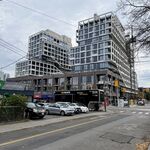M II A II R II K
Senior Member
Want a transportation system that works? Vanpools.
April 20, 2010
By Michael Ennis

Read More: http://crosscut.com/2010/04/20/transportation/19745/
##################################
Across the Puget Sound region, traffic congestion is predicted to double, reaching the levels of present day Los Angeles by 2030. Yet, so-called regional transportation solutions will do very little to help and will actually make traffic worse. A more cost-effective solution is staring us right in the face: vanpools. Vanpools are cheaper, more flexible, and more efficient than any other intercity transit mode. King County's public vanpool program alone carries more riders than Sound Transit's entire Sounder Commuter Rail, and for $1 billion less.
When accounting for ridership and distance traveled, vanpools cost between three and five times less to operate than light rail, buses or commuter rail. In the seven years between 2000 and 2007, the six vanpool agencies in the Puget Sound area spent $50 million on capital infrastructure. This is 18 times less than the same six bus agencies, 12 times less than Sound Transit’s Express bus system and 20 times less than the Sounder Commuter Rail. It costs about 20 cents per passenger mile to build and operate the vanpool program in the Puget Sound region. Compare this to other intercity transit modes like express buses or rail. Sound Transit Express buses cost about $1.70 per passenger mile and Sounder Commuter Rail costs a whopping $5.39 per passenger mile.
And vanpool users pay for most of their own service. In 2007, King County Metro had the highest farebox recovery rate in the region, collecting 83 percent of operating expenses from vanpool passengers. This is in stark contrast to what users pay to ride buses, commuter rail, and light rail. Farebox recovery rates for these transit modes are about 20 percent of operating costs, while taxpayers pay the remaining 80 percent. Between 2002 and 2007, the public paid about $1.26 for every vanpool trip made in the Puget Sound region. In comparison, the public paid $5.13 in operating costs for every passenger trip on Sound Transit buses and $10.66 in operating costs for every passenger trip made on the Sounder Commuter Rail.
As the suburbanization of communities in the Puget Sound region developed over the last three decades, many transit agencies recognized the importance of connecting these outlying areas to employment centers with intercity transit systems. In the 1990s, this regional approach gave rise to Sound Transit and its line of express buses, commuter rail, and light rail to connect users in King, Pierce and Snohomish Counties. This growth pattern also contributed to new funding policies like King County’s 40/40/20 rule, which distributes 40 percent of any new transit service to the Eastside, 40 percent to South King County and only 20 percent to Seattle, to reach the suburbs.
##################################
[video=youtube;Q0xJ6ijP5o0]http://www.youtube.com/watch?v=Q0xJ6ijP5o0[/video]
April 20, 2010
By Michael Ennis

Read More: http://crosscut.com/2010/04/20/transportation/19745/
##################################
Across the Puget Sound region, traffic congestion is predicted to double, reaching the levels of present day Los Angeles by 2030. Yet, so-called regional transportation solutions will do very little to help and will actually make traffic worse. A more cost-effective solution is staring us right in the face: vanpools. Vanpools are cheaper, more flexible, and more efficient than any other intercity transit mode. King County's public vanpool program alone carries more riders than Sound Transit's entire Sounder Commuter Rail, and for $1 billion less.
When accounting for ridership and distance traveled, vanpools cost between three and five times less to operate than light rail, buses or commuter rail. In the seven years between 2000 and 2007, the six vanpool agencies in the Puget Sound area spent $50 million on capital infrastructure. This is 18 times less than the same six bus agencies, 12 times less than Sound Transit’s Express bus system and 20 times less than the Sounder Commuter Rail. It costs about 20 cents per passenger mile to build and operate the vanpool program in the Puget Sound region. Compare this to other intercity transit modes like express buses or rail. Sound Transit Express buses cost about $1.70 per passenger mile and Sounder Commuter Rail costs a whopping $5.39 per passenger mile.
And vanpool users pay for most of their own service. In 2007, King County Metro had the highest farebox recovery rate in the region, collecting 83 percent of operating expenses from vanpool passengers. This is in stark contrast to what users pay to ride buses, commuter rail, and light rail. Farebox recovery rates for these transit modes are about 20 percent of operating costs, while taxpayers pay the remaining 80 percent. Between 2002 and 2007, the public paid about $1.26 for every vanpool trip made in the Puget Sound region. In comparison, the public paid $5.13 in operating costs for every passenger trip on Sound Transit buses and $10.66 in operating costs for every passenger trip made on the Sounder Commuter Rail.
As the suburbanization of communities in the Puget Sound region developed over the last three decades, many transit agencies recognized the importance of connecting these outlying areas to employment centers with intercity transit systems. In the 1990s, this regional approach gave rise to Sound Transit and its line of express buses, commuter rail, and light rail to connect users in King, Pierce and Snohomish Counties. This growth pattern also contributed to new funding policies like King County’s 40/40/20 rule, which distributes 40 percent of any new transit service to the Eastside, 40 percent to South King County and only 20 percent to Seattle, to reach the suburbs.
##################################
[video=youtube;Q0xJ6ijP5o0]http://www.youtube.com/watch?v=Q0xJ6ijP5o0[/video]




